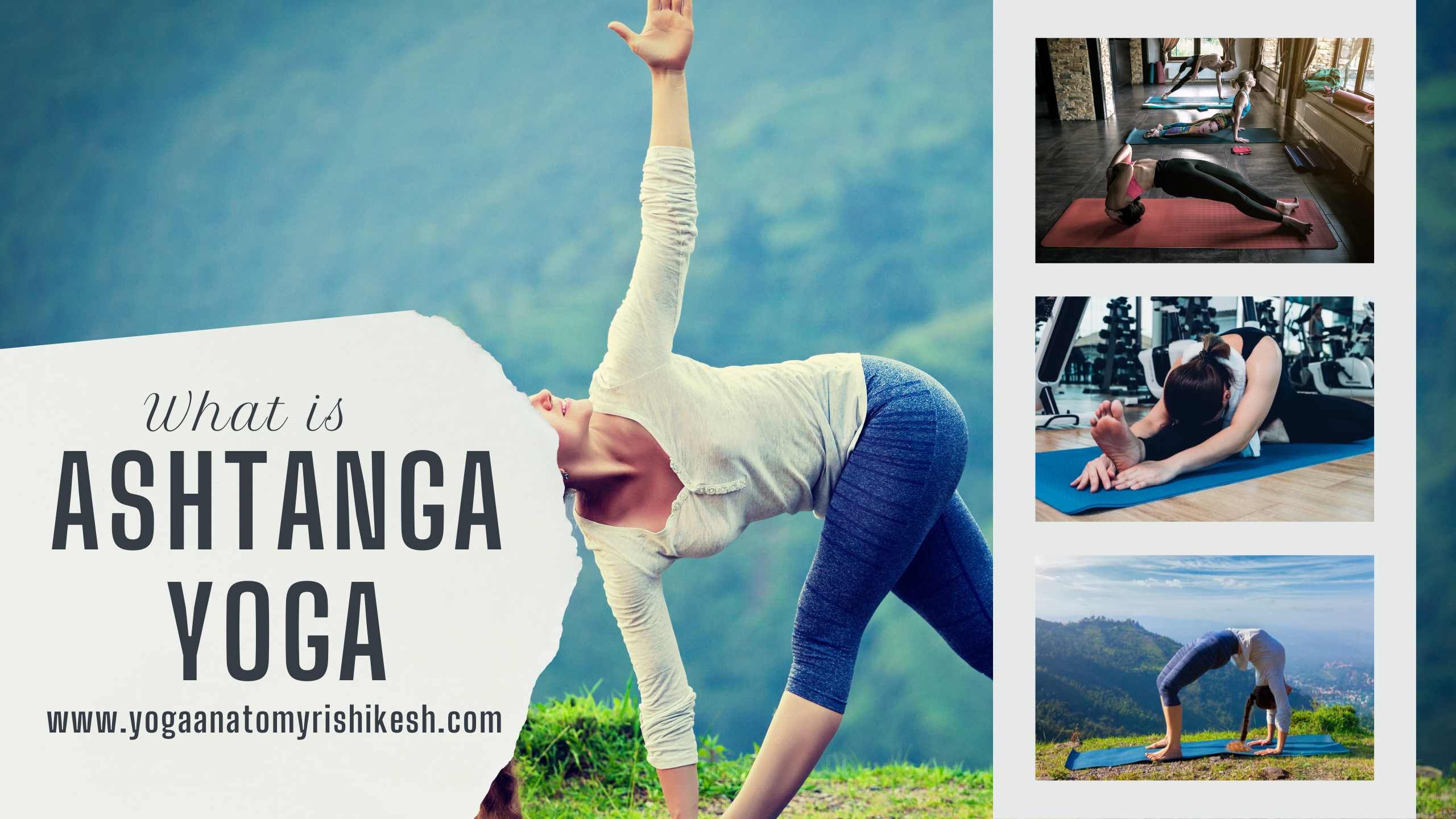Ashtanga yoga is a traditional and dynamic form of yoga. It focuses on syncing breath with a series of postures. Ashtanga yoga is a set of sequenced movements. Each movement is done according to the sequence. “Ashta” means eight, and “anga” means limbs in Sanskrit. It refers to the eight-fold path outlined by the sage Patanjali in the Yoga Sutras.
The practice is divided into eight parts. That includes:
- Moral guidelines
- Self-discipline
- physical postures (asanas)
- Breath control (pranayama)
- Sensory withdrawal
- Concentration
- Meditation
- The ultimate state of bliss or enlightenment (samadhi).
What is Ashtanga Yoga
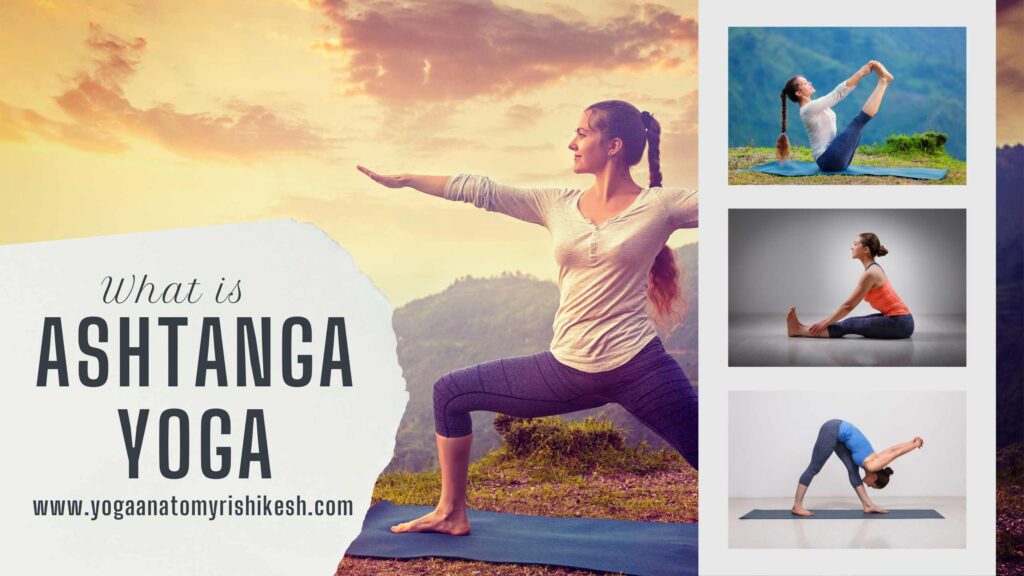
Ashtanga yoga is structured into different series: Primary, Intermediate, and Advanced. The Primary Series, Yoga Chikitsa, focuses on detoxifying and aligning the body. The Intermediate Series, Nadi Shodhana, works on purifying the nervous system. There are advanced series A, B, C, and D depending on how practitioners want to learn more.
Ashtanga yoga should be practiced with proper discipline. All the practitioners will then develop a meditative flow according to the time. Breathing is key; it helps focus the mind and creates heat to cleanse the body. Ashtanga yoga is both physically challenging and spiritually rewarding. It offers a pathway to give peace between body, mind, and spirit.
If you want to practice Ashtanga Yoga , then you have to join these course in Rishikesh
- 100 Hour Yoga Teacher Training in Rishikesh
- 200 Hour Yoga Teacher Training in Rishikesh
- 300 Hour Yoga Teacher Training in Rishikesh
History of Ashtanga Yoga
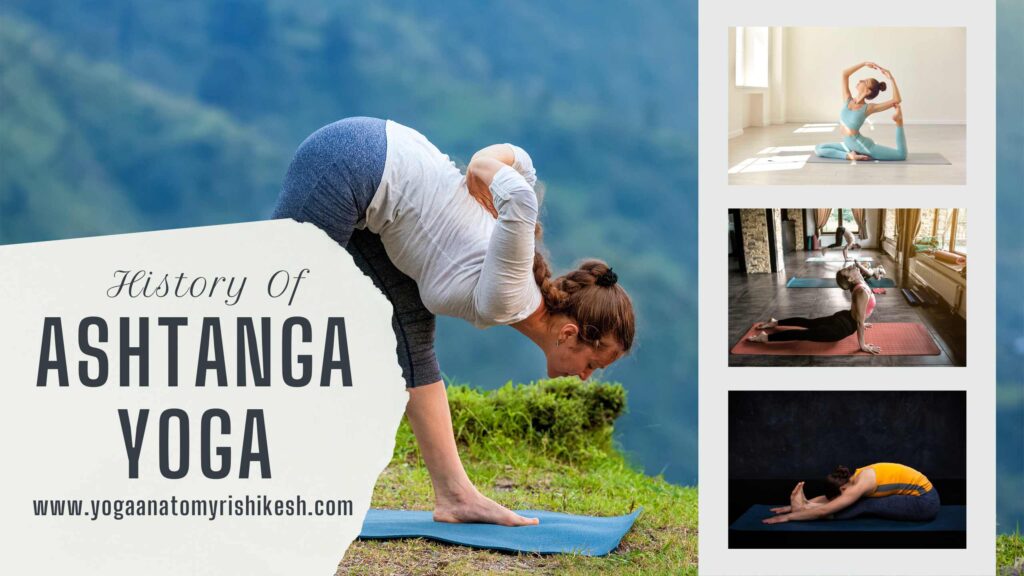
Ashtanga yoga has roots came from back to ancient times in India. Its origins are linked to the Yoga Sutras of Patanjali. It is an ancient text that shows the principles of yoga. Ashtanga yoga is based on these teachings, bringing eight limbs or components to get a balanced and peaceful life.
Initially, Ashtanga yoga was passed down through a Guru-Shishya (teacher-student) tradition in India. The practice was popularized in the 20th century by Sri K. Pattabhi Jois. He learned it from his teacher, Krishnamacharya. He taught students from around the world. Pattabhi Jois refined and structured Ashtanga yoga into a systematic practice. He developed specific sequences of postures linked together by breath, known as Vinyasa. These sequences help cleanse the body, improve flexibility, and calm the mind.
Ashtanga yoga gained recognition for its physical and mental benefits. It attracts practitioners seeking a disciplined and transformative yoga practice. Its history weaves together ancient wisdom with modern changes. That makes it a practiced and respected form of yoga today.
Also Know: What is Hatha yoga, Benefits, History
Eight Limbs of Ashtanga Yoga
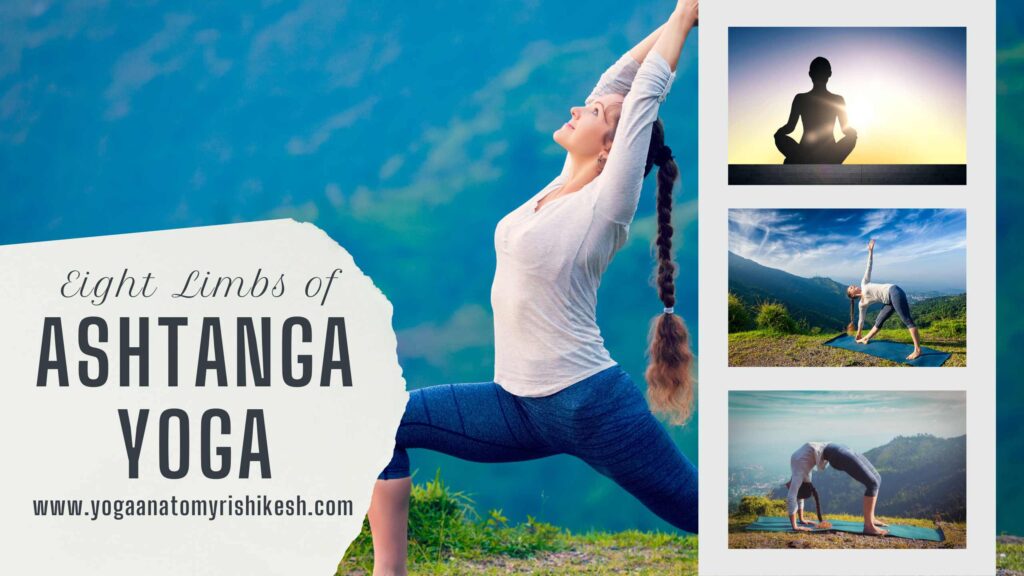
What is Ashtanga yoga: Ashtanga yoga comprises eight interconnected components or “limbs”. Each limb contributes to a holistic and balanced approach to life and self-realization. Here are the contents or limbs of Ashtanga yoga:
- Yamas: These are ethical guidelines involving moral disciplines.
- Niyamas: Personal observances focused on self-discipline and spiritual practices.
- Asana: Physical postures that cultivate strength, flexibility, and balance. These postures are practiced to prepare the body for meditation and spiritual practices.
- Pranayama: Control and regulation of breath.
- Pratyahara: Withdrawal or control of the senses. This limb focuses on detaching from external stimuli to turn attention inward.
- Dharana: Concentration or focused attention. It involves training the mind to concentrate on a single point.
- Dhyana: This limb involves a continuous flow of attention toward the object of meditation.
- Samadhi: The ultimate goal, a state of profound spiritual realization. where the practitioner experiences a sense of oneness with the universe.
Basic Ashtanga Yoga Poses
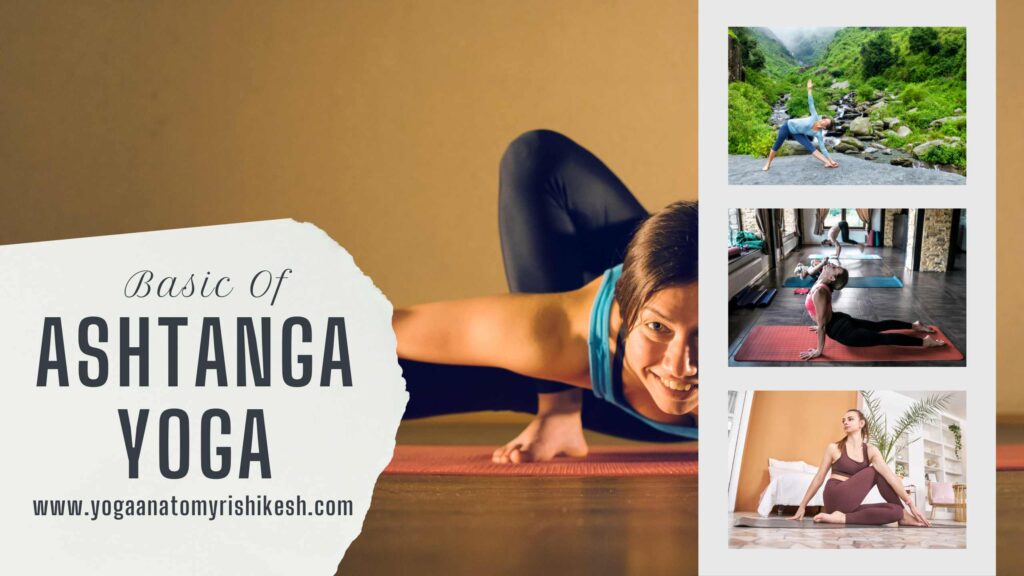
- Tadasana (Mountain Pose): Stand tall with feet together, grounding into the floor. while engaging the legs and lifting through the spine. This posture focuses on alignment and grounding.
- Urdhva Hastasana (Upward Salute): Inhale and raise the arms overhead, palms together or slightly apart. Stretch upwards while keeping the body aligned.
- Uttanasana (Standing Forward Bend): Exhale and fold forward from the hips. Keep the spine long. Hands can reach the floor or hold onto elbows.
- Chaturanga Dandasana (Four-Limbed Staff Pose): From a high plank, lower the body down, elbows close to the sides, keeping the body parallel to the floor.
- Urdhva Mukha Svanasana (Upward-Facing Dog Pose): Inhale and straighten the arms, lifting the chest. Engage the legs while keeping the tops of the feet on the mat.
- Adho Mukha Svanasana (Downward-Facing Dog Pose): From a plank, lift the hips up and back, creating an inverted V-shape with the body. Hands and feet are grounded.
- Virabhadrasana I (Warrior Pose I): Step one foot forward into a lunge, and bend the front knee. Raise the arms overhead, maintaining a strong stance.
Benefits of Ashtanga Yoga
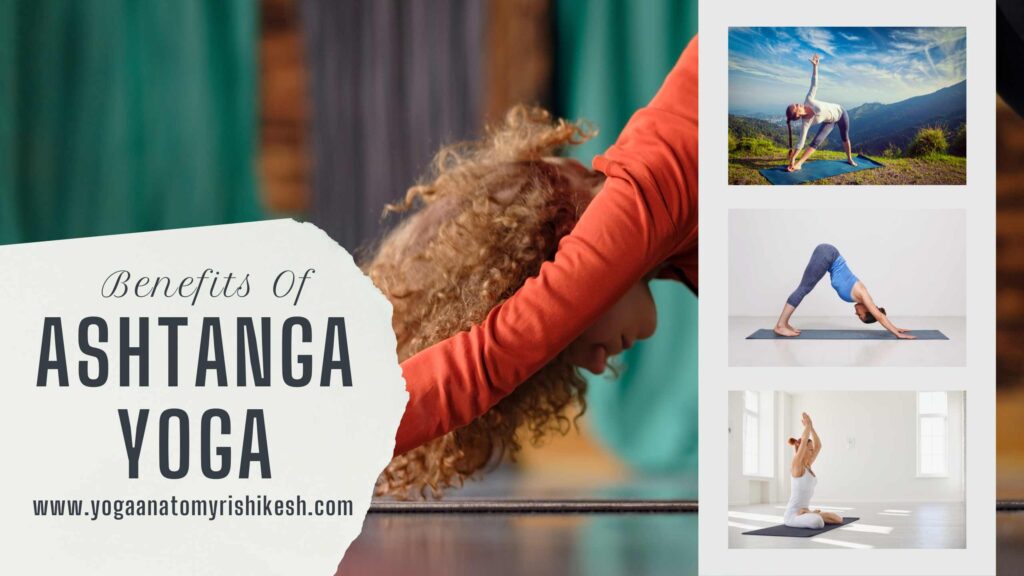
What is Ashtanga yoga: Ashtanga yoga offers many physical, mental, and emotional benefits:
Physical Benefits:
- Regular practice builds strength in muscles, joints, and the core. It improves flexibility and range of motion.
- The dynamic and continuous flow of postures improves cardiovascular health and stamina.
- Sweating during practice helps rid the body of toxins, cleansing the internal organs.
- Asanas improve body alignment, reducing postural issues. It reduces back, neck, and shoulder pain.
- Regular practice aids in weight loss by burning calories and boosting metabolism.
Mental and Emotional Benefits:
- Deep breathing and focused movement promote relaxation, reducing stress and anxiety levels.
- Concentration on breath and movement enhances focus and mental clarity, improving cognitive function.
- Ashtanga yoga helps manage emotions and gives a sense of calmness and emotional stability.
- The practice encourages being present and cultivating mindfulness and self-awareness.
Spiritual Benefits:
- The practice integrates body, breath, and mind, promoting a deeper connection within oneself.
- Ashtanga yoga’s spiritual aspects, such as meditation and philosophical teachings.
- Give a sense of peace and balance between physical, mental, and spirituality in life.
Conclusion
Ashtanga yoga is a powerful practice that unites the body, breath, and mind. Its structured sequences of postures and focus on breath. It gives strength, flexibility, and inner calmness. This ancient discipline offers physical fitness, mental clarity, and emotional balance. Through its eight limbs, it guides practitioners toward self-discovery. It promotes peace within oneself and the world. Ashtanga yoga isn’t only a physical exercise; it’s a pathway to holistic well-being. It encourages mindfulness and growth.
